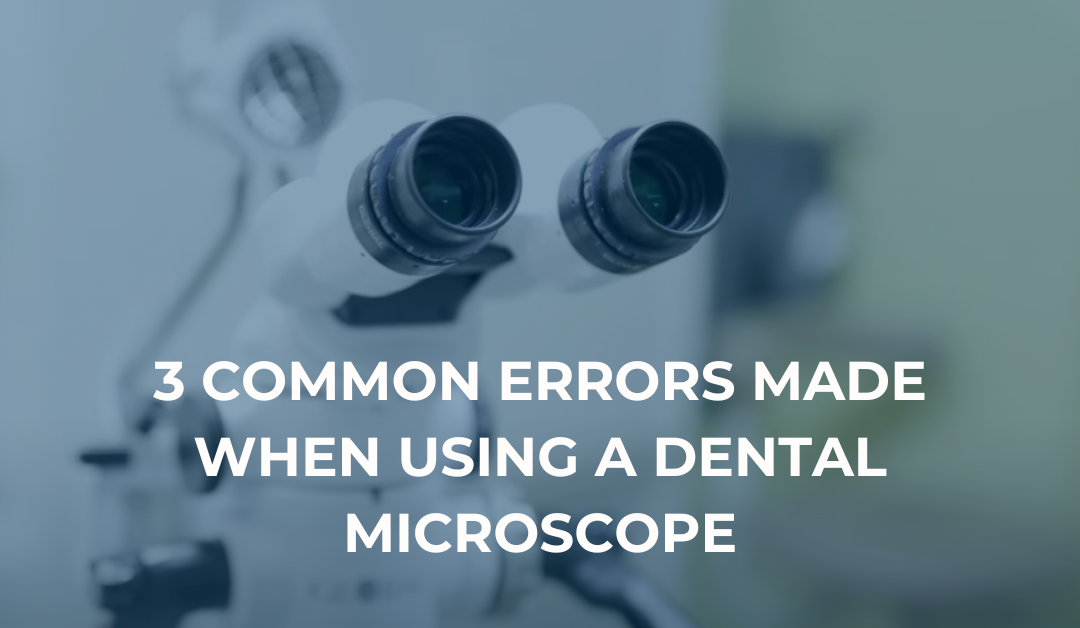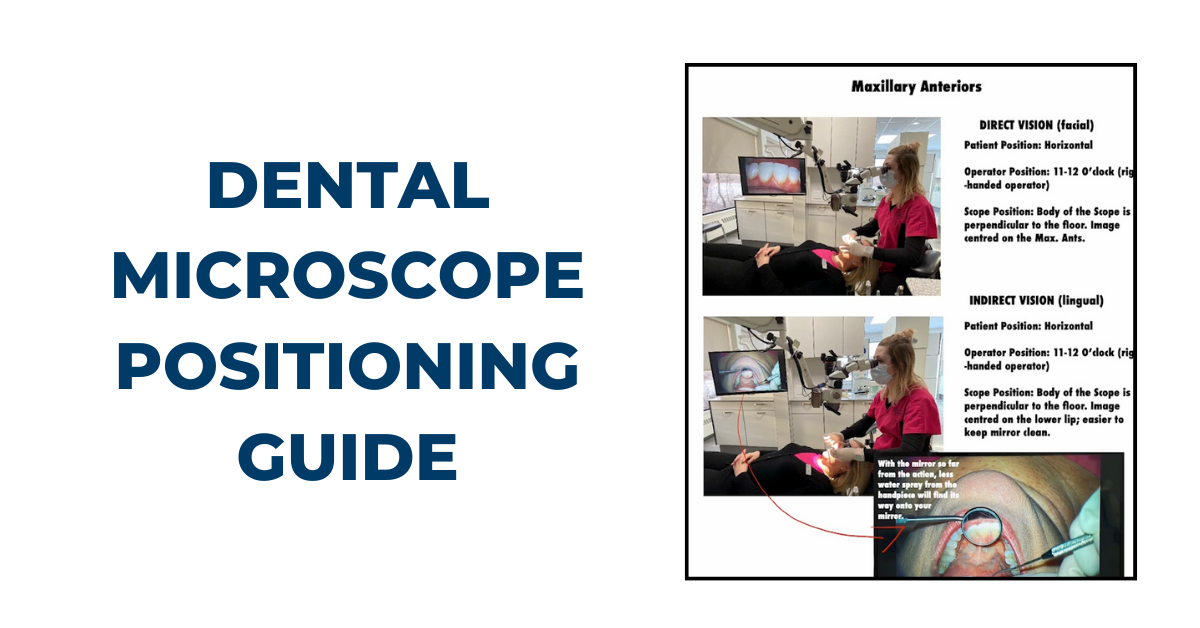Dental Magnification & Illumination

In the field of dentistry, vision is everything. Obviously, you cannot treat what you cannot see. Your ability to visualize the fine details of your patients’ anatomy is definitely improved by the use of a microscope during clinical procedures. However, most dentists only think of magnification when it comes to the integration of microscopy into their practice. The improved illumination a dental microscope provides can be just as important.
Getting started with dental magnification requires training with indirect vision, which in turn allows you to see in greater detail. Coupling magnification with improved illumination helps you see in more detail while minimizing shadows, which can drastically improve clarity.
Today, we’re going to review why illumination is important and tell you how a coaxial lighting system on a dental microscope can take your visual acuity to the next level. Check out this video and continue reading below to see how.
Why is Illumination Important for Dentists?
Making accurate diagnoses and performing treatments can be highly dependent on your visual acuity. When relying on the naked eye, your operatory lights should provide direct lighting, with some manipulation required to minimize shadows. However, most operatory lights only focus light on one area, making it difficult to minimize shadows for the clearest view possible of the desired anatomy.
The same is true when viewing under loupes or a dental microscope, two common devices used to provide enhanced visibility through magnification. With proper positioning, and proper configuration of internal and/or external lighting, you can view the oral cavity with minimized shadows, giving a true-to-life view.
Illumination: Comparing Loupes & Microscopes
As previously mentioned, the two most common magnification tools used by dentists today are loupes and microscopes. As a dental microscope manufacturer, we advocate for the benefits of a scope, but understand there are areas where loupes have advantages as well.
Loupes offer light attachments for illuminating the oral cavity while microscopes utilize onboard LEDs for the same purpose. Headlights worn with loupes are not truly coaxial like the lighting on a microscope, and there is a night and day difference between the brightness of a headlight and lighting on a scope.
Typically, the lighting on a dental microscope provides a stronger illumination of the oral cavity compared to headlights, and even if there was an overhead lamp with the same light output as a scope on the market, it would pale in comparison to the coaxial lighting the scope affords its users.
Why is coaxial lighting preferable during complex procedures?
When a light source isn’t parallel to your line of sight, you will encounter shadows in the deep, dark holes you find during procedures like root canals or delivering a broken root tip. Microscopes eliminate these shadows by unifying the light source and your line of sight within the body of the microscope. Many doctors we speak with describe the final product (the vision you receive through a microscope) as a “new realm”, giving them the ability to see in fine details unlike ever before.
Also, microscopes have the advantage of a fixed light source that, unlike headlights used with loupes, stays perfectly positioned over the patient’s mouth. Many microscopes also offer additional light filters to optimize visualization of hard vs soft tissue.
Microscope Illumination Capabilities: What to Look for
Harnessing the power of illumination through your magnification tool is essential for your accuracy and precision as a dentist. When comparing dental microscopes, different manufacturers offer a variety of capabilities. There are a few factors to consider to understanding the illumination capabilities of the model you’re interested in:
- Light intensity: A high level of intensity is very desirable during procedures, because in combination with optical quality, having illumination sufficient for any task will directly impact what you will be able to see through the eyepieces.
- Color temperature: Aesthetic dentistry requires a natural color rendition gained by illuminating with a “daylight” color temperature of between 5,000 and 6,000 Kelvin.
- The life span of the light source: The life span impacts the cost of ownership, potential downtime, and the environment.
Next, you should get familiar with the three types of light sources used in operating microscopes. Each has its own characteristics, detailed below.
Halogen bulbs use a filament much like an older style incandescent bulb. They are typically the least bright of the three types. The color temperature of their light also varies over their lifetime, and whenever their intensity is increased or decreased. These bulbs have a limited life span and often burn out at the least opportune moment.
Xenon bulbs also have a limited lifespan, and are very expensive to change. They are typically quite bright, but they also consume a lot of electricity and run very hot. This usually requires them to be coupled to the microscope using a fiber optic cable, which will also degrade over time and require replacement. Their color temperature is generally in the “daylight” range. One key issue to consider is that every bulb contains a small amount of mercury, and will need special handling in order to be disposed of properly.
LED light sources are most commonly used in modern microscope manufacturing due to their lifespan and brightness. To differentiate themselves from competitors, most manufacturers publish the LED Lux output provided to their microscopes.
For example, our Global A-Series microscope provides over 115,000 Lux output. This is the brightest LED light source available, while producing unobstructed, coaxial, shadow-free illumination. It maintains a constant color temperature at a nearly ideal 5,500 Kelvin, and is capable of operating at a wide range of intensities. The Light Emitting Diode after which it is named, uses very little power which leads to a very long life. At approximately 50,000 service hours*, the need to change your light source virtually disappears.
Questions? Reach Out!
If you’re looking to get started with magnification, or considering adding a microscope to your practice, we are here to help! As one of the first companies to focus on dental microscopy, founded over 25 years ago, we’ve been helping dental practices see the benefits of high magnification through a dental microscope.
We’re proud to be based in the US, with manufacturing and assembly facilities in St. Louis, MO. This helps us give our customers the best service, domestically and internationally. And, as part of our commitment to our customers, we offer a limited lifetime warranty on our scopes (US & Canada customers only).
Please feel free to reach out at 800-861-3585 or by clicking the button below.



